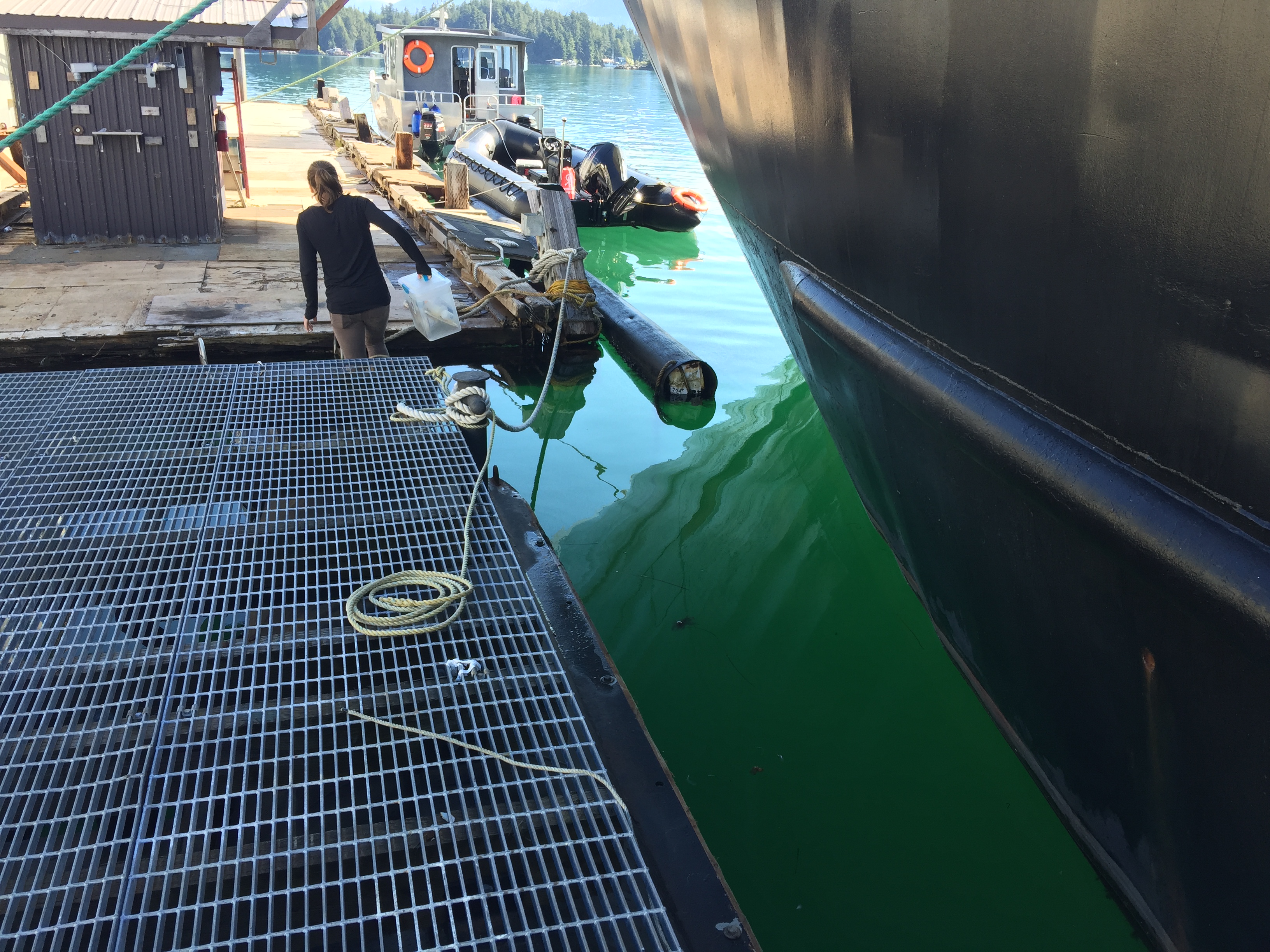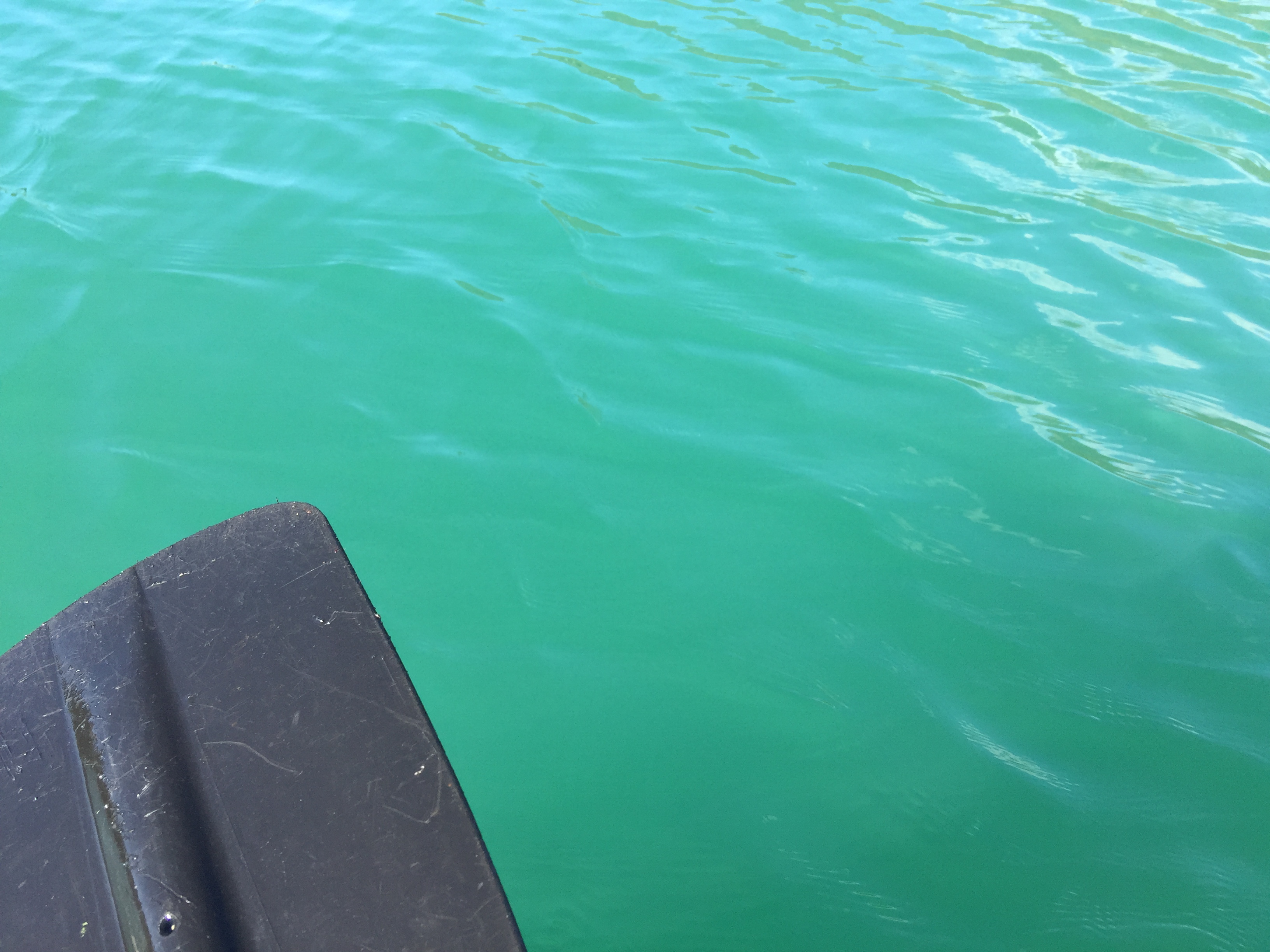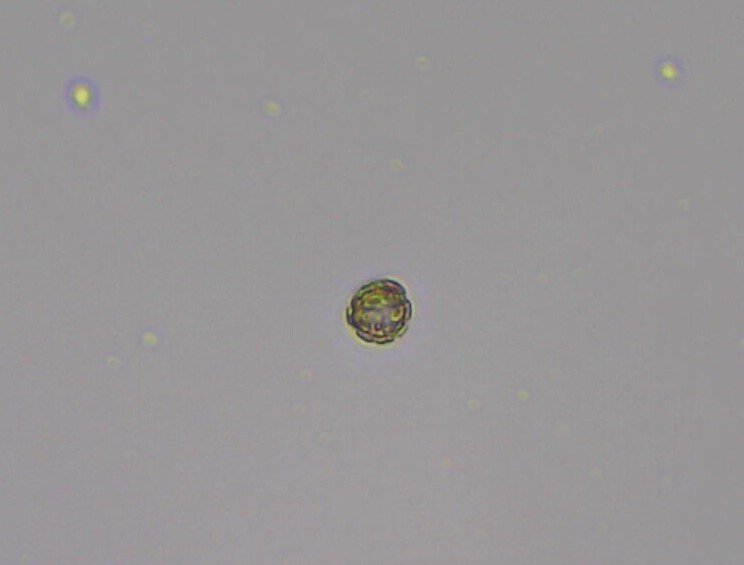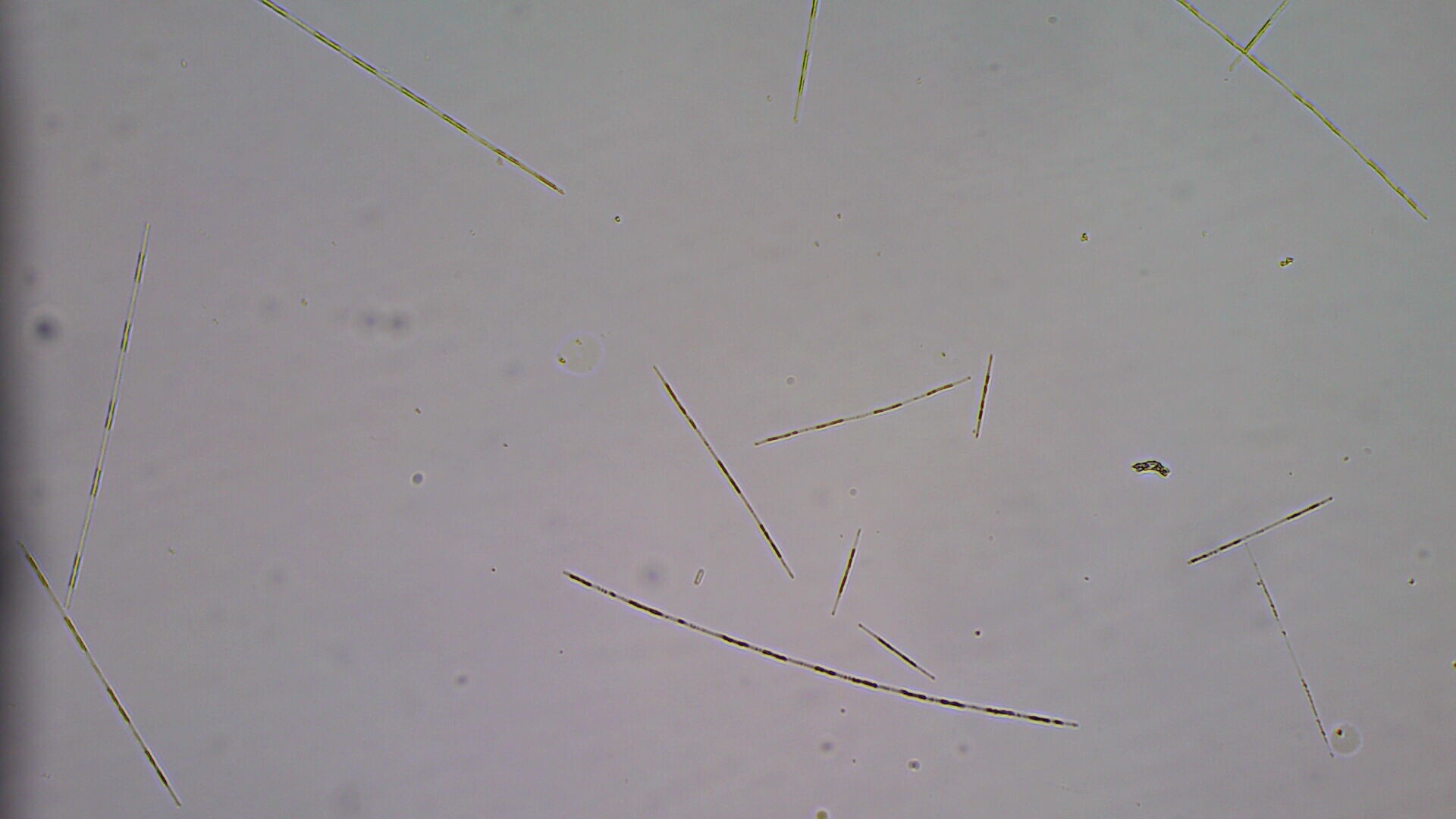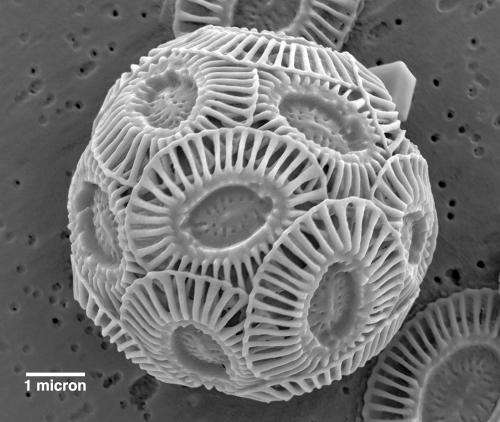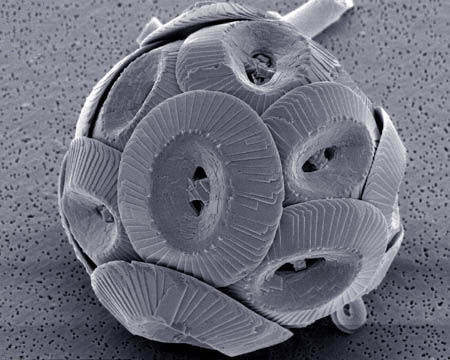Note: This post was originally written and posted in September 2018
Many community members in Sitka last week noticed a change in the color of our waters—in many places along the shore, the water could be seen having this milky green or aquamarine appearance.
So, we went out to several spots (including Jamestown Bay and Thimbleberry Bay) with our plankton net to take a water sample and see if we could identify the cause of this color change. After looking at our samples under the microscope, we believe that the change in color of the water could be attributed to a bloom of coccolithophores. We also found a significant amount of the species leptocylindrus minimus.
Coccolithophores are creatures we don’t often see in our plankton samples because they are so small that our plankton net usually doesn’t even catch them, so it was exciting to find a couple specimen in our sample. They are known to cause such turquoise-colored waters during bloom events. While the image we took from our microscope may not seem so impressive, under a more powerful magnification, coccolithophores’ elegant armor can be appreciated. The plates that surround the coccolithophore, which look like miniature hubcaps and are called coccoliths, are made of calcium carbonate (the same chemical composition as chalk and seashells). When coccolithophores shed extra coccoliths that they don’t need or when the organisms die, these coccoliths sink to the bottom of the ocean; therefore, coccolithophores are essential in transporting significant amounts of inorganic carbon to the ocean depths. Additionally, like other kinds of phytoplankton, coccolithophores perform photosynthesis. Because of their sheer abundance, coccolithophores are responsible for a large portion of the primary production that makes up the base of the food web that supports all marine life.
Sources:
Information:
https://oceanbites.org/blooming-around-the-world-a-story-of-coccolithophore-co-existence/
https://earthobservatory.nasa.gov/Features/Coccolithophores/coccolith_1.php
Images:
https://www.mlml.calstate.edu/geooce/2016/09/21/foraminifera-and-coccolithophores/
https://phys.org/news/2013-08-carbon-sequestering-ocean-cope-climate.html
This post was written by Angela Hessenius, AmeriCorps VISTA



